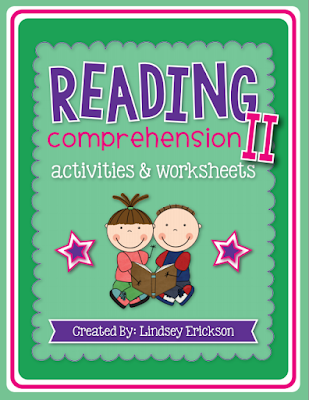The transition from 2nd Grade to 3rd
Grade can be a tough one. Students are
no longer learning to read, they are reading to learn. I have had (and am continuing!) to adjust my
teaching practices in order to meet their needs and the higher-level
comprehension skills that are expected of them.
I want to share with you some resources that I have found to be effective
for increasing comprehension at school and at home.
I loved Debbie’s post this month on the importance on daily
reading. My new schedule doesn't allow
for daily read aloud time anymore, but I'm trying to squeeze it in as much as I
can. I am also trying to push reading at
home more. I've always sent home a
reading calendar to record nightly minutes.
This year I revamped mine, had students set a goal, and reward them
with a more special prize each month they meet the reading goal.
Check them out here.
I want my students (and their parents) to get the most out
of their reading. As I was brainstorming
with colleagues on the best way to accomplish this, I came up with these reading comprehension question cards.
Check them out here.
This week
I went through the 3rd Grade Reading Standards and came up with
questions for most of the Literature Standards.
I plan on copying the question cards on different colored card stock,
laminating, and putting them on a ring for myself, my instructional aide, and
my parent volunteers. This will help us
all ensure we are asking 3rd Grade appropriate questions and helping
make the most out of our daily readings.
I am also going to send a copy of the questions home, so parents have an
idea of the types of questions their child should be answering when
reading. It is no longer simple, closed
questions. Students are now expected to
answer open-ended, higher-level questions about complex level texts. I will be adding to this packet over the next month or so,
as I continue to unwrap the reading standards.
In addition to my two products, I want to share with you two products that I have
been loving from The Teacher Wife.
I bought these two reading comprehension packets back when I taught first
grade, and I am still using parts of them in third. They are FULL of questions and activities to
use with any book, a valuable resources to have!
How do you get the most out of reading comprehension?





















































